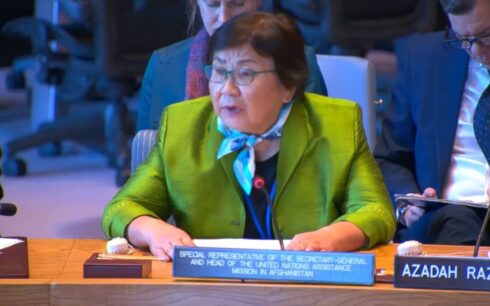The United Nations Office for the Coordination of Humanitarian Aid (OCHA) has issued a warning regarding the lack of funds in Afghanistan, highlighting the immense challenge it poses to providing assistance to millions of vulnerable individuals in the country.
According to their latest report, the organization has been compelled to halt the operations of 25 mobile health and nutrition units in eastern Afghanistan due to insufficient funds.
Furthermore, the United Nations Office for the Coordination of Humanitarian Affairs has revealed that 1.4 million new and expectant mothers, toddlers, and preschoolers are no longer receiving crucial nutritional support.
The impact of this funding crisis extends to provinces such as Nuristan, Kunar, Laghman, and Nangarhar, where the closure of these teams means that over 100,000 people will be deprived of basic healthcare and nutrition services in the Eastern region.
Highlighting the severity of the situation, Care International has also raised concerns, stating that 54 percent of aid organizations in Afghanistan are grappling with inadequate funds.
Melissa Cornet, a humanitarian advocacy adviser with CARE, emphasized the challenges faced by their organization, pointing out that financial constraints severely impede their ability to deliver assistance on the ground. The lack of funding emerged as the primary challenge for 54 percent of surveyed aid institutions, with limited resources and manpower further exacerbating the crisis.
“The biggest challenge actually for our organization [is] the fact that we are currently facing funding cuts that affect our ability to continue delivering on the ground,” said Cornet.
In the health sector alone, the lack of funding has dire consequences, with an estimated 7.6 million individuals facing the absence of essential life-saving health assistance if current funding levels, which remain below a quarter of the required amount, persist.
In addition, over 31,500 households with severely malnourished children have already missed out on critical integrated cash packages for nutrition due to inadequate funding. The education sector also faces significant disruption, potentially leading to the discontinuation of around 2,800 community-based classes, affecting 83,000 children, 59 percent of whom are girls, who only recently gained access to education after the Taliban takeover.
Samira Sayed Rahman, the director of Policy, Advocacy, and Communications at the International Rescue Committee, stressed the magnitude of the humanitarian crisis, with 28 million people in need of aid and 15 million facing severe food insecurity in Afghanistan.
The support provided by aid agencies in the past two years has played a crucial role in averting famine, underscoring the necessity of sustained contributions.
As international institutions continue to sound the alarm about the funding shortfall and the escalating humanitarian crisis in Afghanistan, the former finance minister of Afghanistan raised questions about the Taliban’s economic policies. During a meeting at the American Institute of Peace, Khalid Payandeh criticized the Taliban’s financial approach, pointing out the lack of transparency and allocation of a significant portion of the budget to the military rather than essential services like education and healthcare.
Earlier this year, the World Food Organization also expressed concerns over the funding deficit in Afghanistan, revealing that it was forced to reduce aid by up to eight million tons due to insufficient funds.





